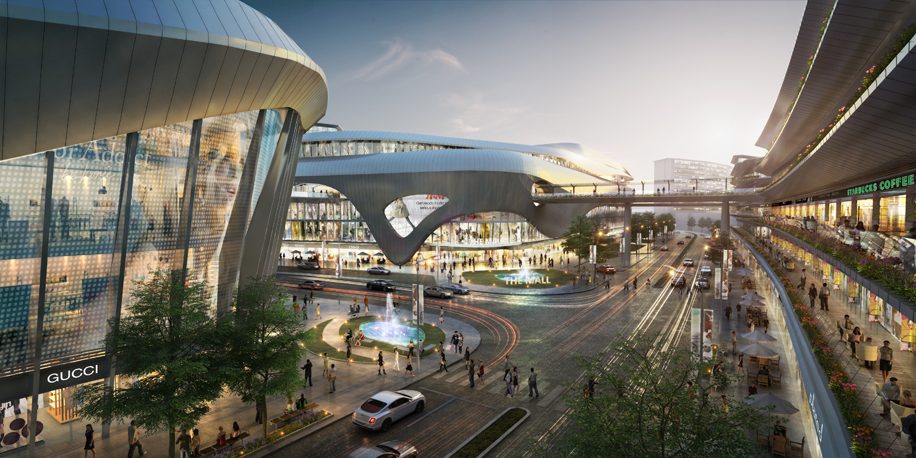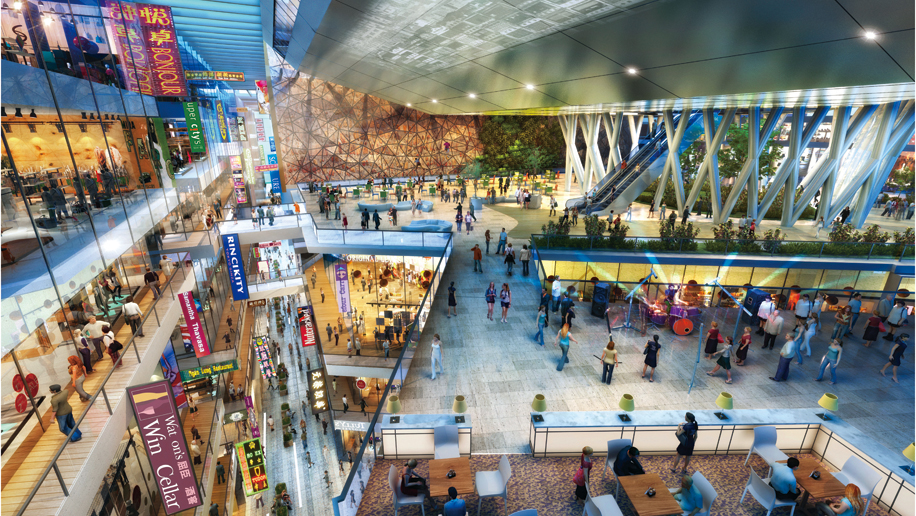
In 1998, a gleaming new Hong Kong International Airport (HKIA) opened on the newly manmade island of Chek Lap Kok – an answer to the increasing congestion suffered at Kai Tak, with its single runway and cramped terminal facilities.
Fast-forward almost 20 years, and HKIA has become the eighth busiest airport in the world according to the Airports Council International, with a record 70.5 million passengers in 2016. Projections for the next seven years expect passenger levels to hit up to 90 million.
It also happens to be the busiest cargo airport in the world, shipping some 4.3 million tons last year worth HK$3.2 billion (US$410 million). However, like many airports, particularly around the Asia-Pacific region, a sharp increase in global air traffic is putting pressure on the infrastructure, and HKIA is now in the midst of a multibillion-dollar expansion plan to future-proof its handling capacity.
Part of the urgency comes from two other major transportation projects nearing completion in Hong Kong, which are expected to further increase demand: the Hong Kong-Zhuhai-Macau bridge (scheduled to open in December) and the upcoming Tuen Mun-Chek Lap Kok road link (delayed to 2020 for completion). When these two major ventures are complete, HKIA will have an enlarged catchment area of around 60 million people within a two-hour drive.
UPDATING INFRASTRUCTURE
In August 2016, after protracted deliberation, the three-runway system (3RS) was officially launched, with the eight-year project expected to be operational by 2024. A whopping 650 hectares of land will be reclaimed to create a new runway, taxiway system and the Third Runway Passenger Building, which will be connected to Terminal 2 by a new automated people-mover system.
The mammoth project, estimated to cost HK$141.5 billion (US$18 billion), will also include a new high-speed baggage handling system and expanded road and transportation networks.
“The 3RS is a critical infrastructure project to support the aviation industry and the long-term economic development of Hong Kong,” says Jack So Chak Kwong, chairman of Airport Authority Hong Kong. “We urgently need this expansion as HKIA’s existing two-runway system will reach its full capacity soon. With the additional capacity provided by the 3RS, airlines can provide more destinations and more frequent flights, and passengers will have more choice and convenience.”

Somewhat controversial is the Airport Authority’s decision to levy an “Airport Construction Fee” on outbound passengers to fund the third runway project. This was implemented in August and ranges from HK$70 (US$9) for economy short-haul passengers to HK$180 (US$23) for long-distance first and business passengers. The funding is expected to generate up to HK$26 billion (US$3.3 billion) towards the project by 2024.
In addition to the 3RS project, there are a number of other extensions and additions in the works – with some already completed. The HK$2.5 billion (US$320 million) West Apron Expansion was completed in 2014, providing 28 additional parking stands for cargo and maintenance, while two years ago HKIA opened the HK$10 billion (US$1.3 billion) Midfield Concourse (MFC). Located to the west of Terminal 1, between the two existing runways, the MFC has increased the airport’s capacity by ten million passengers a year and now handles roughly 20 per cent of all traffic. It is connected to Terminal 1 via an extension of the Automated People Mover system.
Moving forward, a HK$7 billion (US$895 million) enhancement project for Terminal 1 is also set to commence. It will see more than 40 new check-in counters with self-bag drop facilities and two additional baggage reclaim carousels installed. Other hardware investments will include an additional annex building, 1,400 additional car parking spaces, an aviation academy and HKIA preschool, plus staff facilities including a sports centre.
Another major investment is the planned “Sky Bridge” – a pedestrian bridge connecting Terminal 1 and the North Satellite Concourse (NSC, which opened in 2010 with ten airbridge stands for narrow-body aircraft). The weatherproof footbridge, equipped with 24-hour moving walkways, will reduce passengers’ travelling time and remove the current need for shuttle buses, as well as enabling the NSC to serve a greater number of flights.

EXPERIENTIAL TRAVEL
While catering to the basic infrastructure issues, Hong Kong airport is also using the expansion to create a new “airport experience” based around entertainment, lifestyle and experiential offerings – the Sky Bridge being a perfect example.
At 28 metres above ground, it will allow the largest A380 aircraft to taxi underneath (functional, from an apron logistics point of view), and will also be outfitted with an observation deck, giving plane spotters rare birds-eye views as the aircraft pass underneath. F&B outlets will also be installed in the two towers at either end of the 200-metre bridge to offer more lifestyle options.
According to the Airport Authority, similar experiential revamps will be introduced to boarding gates, with the possibility of design themes, smart technology and green features.
Some of the most significant lifestyle enhancements will come in 2020, with the completion of HK$7 billion (US$895 million) worth of improvements to Terminal 1. The East Hall will see the addition of a two-storey play area for children, a recreational zone for adults and the redesign of the food hall. It will also get a large roof garden with an alfresco dining area – the first significant outdoor space in the restricted areas of the airport (though there are now two balconies in the Midfield Concourse – one designated for smokers).
“The enhancement projects for Terminal 1, together with the three-runway system in 2024, will increase the airport’s handling capacity, as well as bring a fresh look and feel,” says Fred Lam, CEO of Airport Authority Hong Kong. “Passengers from around the world will enjoy an experience tantamount to travelling through a new airport.”

LIFESTYLE DESTINATION
The most exciting leisure-centric addition however is the major Skycity development, a huge entertainment complex to be located next to Terminal 2. The giant 668,000 sqm hub will have five key concepts including “cybertainment”, “edutainment”, a “gourmet kingdom”, “action and excitement” and “events”, plus a solid retail element.
A teaser video has revealed that passengers can expect a diverse range of options, from virtual reality arcade games and simulated skydiving to waterslides and international cuisines. Event groups are also being targeted, with new spaces to host car product launches or extravagant concerts.
According to Jack So, Skycity aims to capture broad opportunities in tourism and business, while also providing a dynamic lifestyle and family entertainment hub for Hong Kong residents and visitors alike. “Our vision is to create a new destination that goes far beyond the traditional notion of a shopping mall,” he says.
The first phase is due to open in 2020, with 195,000 sqm of retail, dining and entertainment space. Skycity will also boast a brand-new airport hotel – the Regal Skycity Airport Hotel, which will offer 1,200 guestrooms and suites, a 1,000-guest pillarless ballroom, four restaurants and other leisure facilities.
This will join its sister property, the Regal Airport Hotel, the 658-room Skycity Marriott Hotel (attached to the Asia World Expo exhibition centre) and the Novotel Citygate hotel in Tung Chung.
John Girard, Regal Hotels’ vice president and area general manager for Hong Kong, says: “The new Regal Skycity Airport hotel will be an iconic landmark and provide a dynamic new destination hotel.”

SHOPPING SPREE
Regular facilities are also being given a revamp in line with a more “experiential” offering. The duty-free shopping experience recently underwent a major shake-up with longstanding operator DFS losing its contract.
Instead, the Airport Authority has awarded the duty-free liquor and tobacco concession to the joint China Duty Free-Lagardere company (CDF), while perfumes, cosmetics and fashion accessories will be taken over by Korean giant Shilla.
The new concessions will bring fresh concepts such as a whisky chamber, in-store VIP lounge and more. CDF has even stated it will offer “virtual reality” facilities at its boutiques. Shilla is also expected to offer a modern take, with almost 100 new brands, a dedicated zone for male beauty products and a “New Generation” zone to promote new products.

LOUNGE UPGRADES
Passengers can also expect to see the “lifestyle” atmosphere being embraced by lounge operators. Plaza Premium is set to open two new lounges by the end of 2017, adjacent to the East Hall. One of these will be the “Plaza Premium First”– an entirely new brand that aims to exceed current standards of business and first class lounge offerings.
“In terms of the service provision, it’s definitely higher than what the existing airport lounges can provide, because we’re talking about a variety of quite experiential offerings,” says James Yap, general manager of Plaza Premium Hong Kong. “The whole idea is to surpass all the other lounges.”
Among these offerings will be a co-branded whisky bar with high-end champagne and whisky brands, plus an à la carte dining area with live cooking stations, manned on occasion by celebrity chefs. A separate event space (that can double up as an overflow area at peak times) will also be available for VIP events such as wine-tasting sessions.
Hong Kong Airlines will also debut a new lounge this month. Located in the MFC, the offering will be double the size of the current Club Bauhinia in Terminal 1, and boast a modern design. New features will include a number of VIP rooms with audiovisual technology to cater to meetings and conference calls; rest areas with shower facilities; and exciting new dining options focused on providing a local experience with Hong Kong street food specialities such as egg waffles.
Another highly anticipated lounge will be the launch of American Express’s Centurion Lounge when it opens in Terminal 1 later this year. Card members will be able to enjoy complimentary food, premium wines and cocktails from top sommeliers and mixologists, high-speed wifi, shower facilities, noise-buffering work stations and more.












